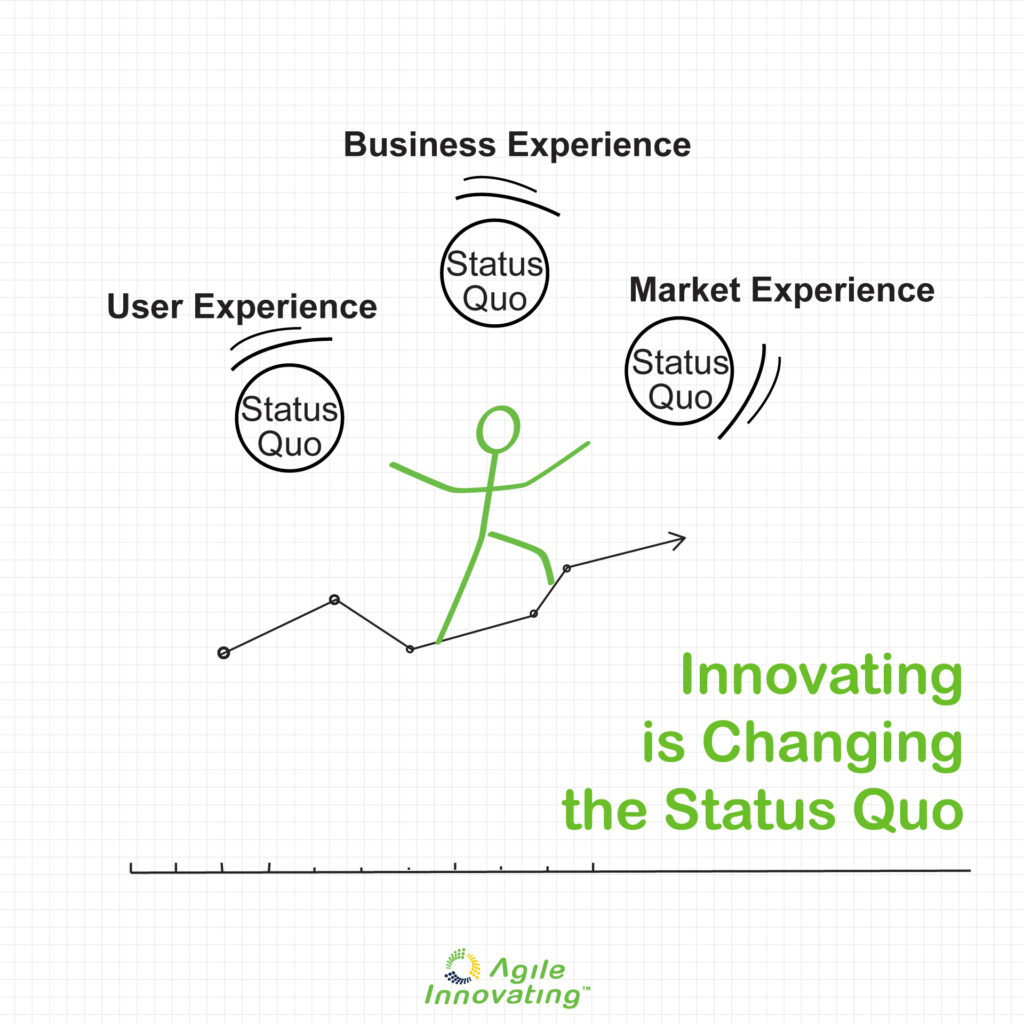
An existing solution, the situation, and the circumstances of use defines the status quo. Innovating, the acts involved in inventing and introducing a new solution, seeks to change the status quo.
Defining the existing status quo can be a confusing task. It is a complex combination of the User, Business, and Market situations, circumstances, and solutions. Defining and understanding the combined status quo is innovating’s base camp.
𝑨𝒈𝒊𝒍𝒆 𝑰𝒏𝒏𝒐𝒗𝒂𝒕𝒊𝒏𝒈 takes a novel approach to innovating by focusing on changing the combined status quo.
(1) There is an existing solution for everything a person wants to do or accomplish in a particular situation. That solution exists within a discoverable 𝐔𝐬𝐞𝐫, 𝐁𝐮𝐬𝐢𝐧𝐞𝐬𝐬, 𝐚𝐧𝐝 𝐌𝐚𝐫𝐤𝐞𝐭 𝐬𝐭𝐚𝐭𝐮𝐬 𝐪𝐮𝐨.
(2) You have to decide what you want your new solution’s competitive position to be (e.g. quality of user experience versus price) with respect to the targeted customer type.
(3) You will gain more traction sooner by targeting over-served, under-served, or non-served customers first. Nominally served customers have the least incentive to change solutions.
(4) People will adopt a new solution, changing the 𝐔𝐬𝐞𝐫 𝐬𝐭𝐚𝐭𝐮𝐬 𝐪𝐮𝐨, if and only if there is a 𝘕𝘌𝘛 𝘐𝘔𝘗𝘙𝘖𝘝𝘌𝘔𝘌𝘕𝘛 in the user experience and a 𝘕𝘌𝘛 𝘙𝘌𝘋𝘜𝘊𝘛𝘐𝘖𝘕 in trouble when comparing the new solution with the existing solution.
(5) In an established business, the bias to the 𝐁𝐮𝐬𝐢𝐧𝐞𝐬𝐬 𝐬𝐭𝐚𝐭𝐮𝐬 𝐪𝐮𝐨 associated with the existing solution is strong. Leadership must actively seek to increase the dissatisfaction with the existing solution while simultaneously working to increase the desire for a new solution to overcome the bias. This work can begin before a new solution is invented.
(6) You must overcome the bias to the Business status quo and achieve acceptance within the business before you have a chance to achieve adoption in the marketplace and change the 𝐌𝐚𝐫𝐤𝐞𝐭 𝐬𝐭𝐚𝐭𝐮𝐬 𝐪𝐮𝐨.
